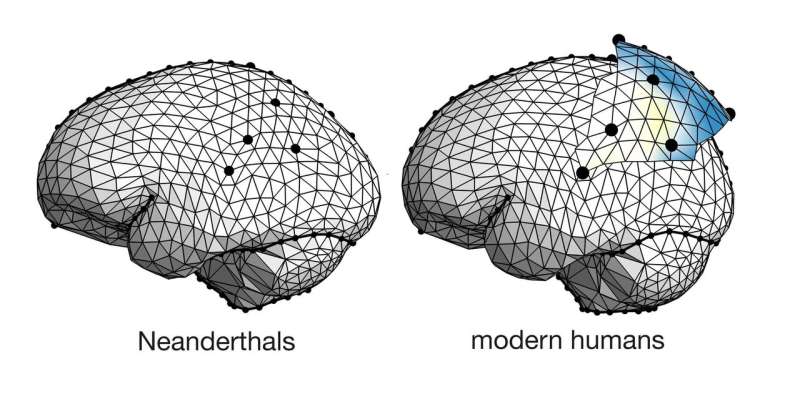Neanderthal and Homo sapiens brains. Credit: Pereira Pedro et al
The Paleoneurobiology Group of the Centro Nacional de Investigación sobre la Evolución Humana (CENIEH), led by Emiliano Bruner, has just published a morphological analysis of the brains of Neanderthals and modern humans in the Journal of Human Evolution, whose results suggest that the more rounded shape of modern human brains is due in part to larger and bulgier parietal lobes, on average.
Two regions in particular may be more highly developed in homo sapiens. The first is the dorsal posterior parietal region, and the second is the intermediate area of the intraparietal sulcus, in the inferior parietal lobule, says Sofía Pereira, who coordinated this study in collaboration with the Max Planck Institute in Leipzig (Germany).
The study was conducted using three-dimensional spatial models, which have enabled comparison of brain shape in 52 modern humans with that in eight Neanderthals, employing endocranial casts and the impressions left by the cerebral sulci on the surface of the braincase. The geometric model not only includes information on the general shape of the brain, but also the specific locations of the parietal anatomy.
The parietal lobes are implicated in visuospatial functions such as visual imagination and handling, and in general in all those cognitive aspects relating to coordination between brain, body and external environment, including the eye-hand relationship and that between hand and tools.
More information: Ana Sofia Pereira-Pedro et al. A morphometric comparison of the parietal lobe in modern humans and Neanderthals, Journal of Human Evolution (2020). DOI: 10.1016/j.jhevol.2020.102770
Journal information: Journal of Human Evolution
Provided by CENIEH
























